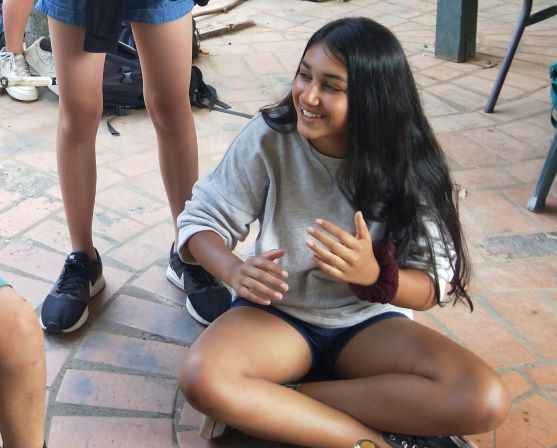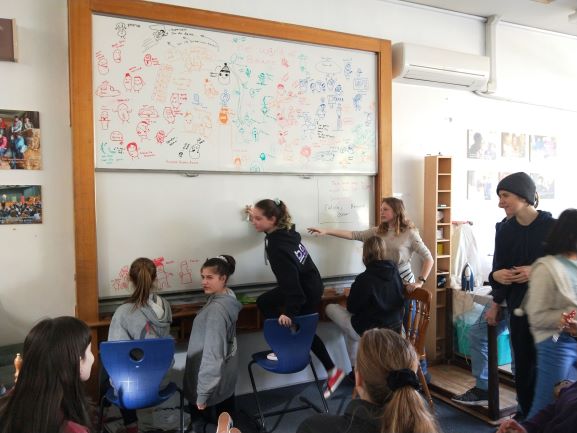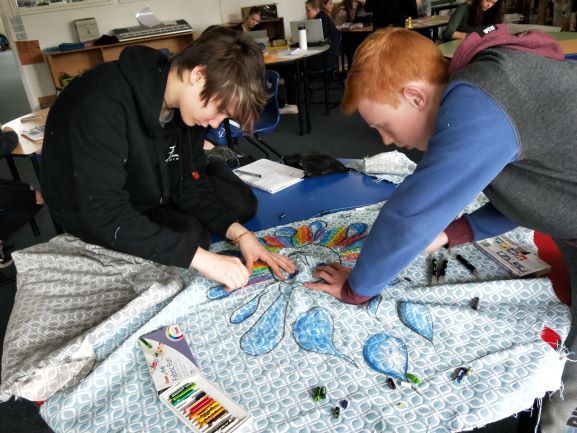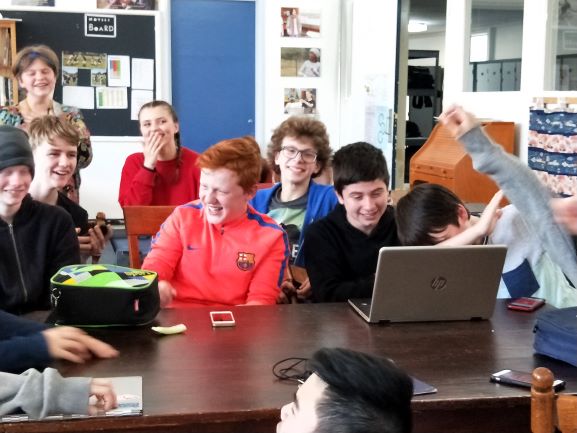Self-development of the individual
“A child’s work is to create the man he will become. An adult works to perfect the environment, but a child works to perfect himself,” Maria Montessori.
The adolescent years are all about the search for identity, the discovery of self, finding a place in society - who else can do this but the adolescent themselves. They are, as Maria Montessori put it, “adults-in-waiting”, ready to build the identity that will take them through senior school years into tertiary or training and beyond.
Self-identity and self-construction
“It is true that we cannot make a genius. We can only give each child the chance to fulfil his potential possibilities,” Maria Montessori.
Students develop a sense of self from their work, contributions, philanthropy and care for each other. This sense is supported by the act of expressing themselves: art, music, crafts, drama, performance, writing, speaking, building, etc.
This is their greatest work: building themselves. An enormous task, filled with trial and repetition, failure and tribulation, success, love, joy, despair, etc.
These young people are undergoing the greatest change in both brain and body since the age of three. It is our responsibility to remove barriers from their path and provide support. We aid them in finding their own best paths, the most suitable steps to explore, the keys to their inner roadmap ... but they have to make this journey for themselves.

Choice within limits
Our society has been conditioned to reward and praise all children’s efforts - stickers, stamps and certificates overflow. In MAP we recognise that reward comes from the success of the task at hand. We have high expectations: it is pointless to congratulate them when they reach these expectations. It is far better to discuss refinements and progress to the next level. An externally or adult granted reward suggests completion has been attained - it does not encourage the recipient to go on trying, to achieve even more, to continue their learning forever.
An adult passing judgement on students work absolves them of the need to self-reflect and self-assess. Adolescents are their own harshest judges - fully aware of when they have done well and when they have not. They learn considerably more by testing the results of a project themselves, than by us giving them an elephant stamp.

Creative expression – expressing oneself
Creative and physical expression is a vital component of the Montessori curriculum, helping the students develop skills and expertise in areas of personal interest that build confidence and passion. They also provide a means to explore their emerging identities, a focus for physical energy, an exposure to a range of activities, and an opportunity to challenge themselves.
Adolescents must have opportunities for self-reflection and express their opinions without fear of judgement. They thrive in an environment where they can feel safe as they go through the profound physical and emotional changes that is an integral part of adolescence. Creative activities are regularly built into the fabric of our core disciplines – Language, Numeracy, Occupations and Humanities.
Problem-solving – Humanities games
Students of varying abilities thrive as they learn to live and work together. Integrated studies lead to sophisticated problem-solving and contributions to their school community. Integrated into MAP@TC are problem-solving as a group, originating and undertaking cooperative activities, and willingly partaking in conflict resolution. Every student is expected to work productively with each and every other student.
Our common approach within Humanities are simulations and role-play events, allowing students first-hand experience at being part of the events that shaped history, geographic politics, philosophy, community, planning and environmental care. Instead of answers and solutions, students are given roles and problems, gifting them the opportunity to explore issues and test solutions for themselves. Students learn actively through solving problems, and the knowledge gained is therefore relevant to them.

Use of technology in the environment
As we recover from the “everything-can-be-learned-on-a-computer” movement and refocus on learning for our changing world, MAP@TC is relegating the electronic device to its rightful status as a tool, not as a solution. As proud as we may be of Montessori graduates Sergey Brin and Larry Paul for creating Google, we understand that our students need to seek their own answers, not someone else’s. To promote creative thinking and solution-based learning, MAP@TC joins the likes of NASA and Silicon Valley, where students are required to do their thinking and questioning first, before recourse to the computer; to suggest and test solutions before copying how someone has already done it.
We do use computers regularly and are keen for students to become adept at all common programs, at web searching cleverly, and at the use of many creative programs. But all for a reason.



